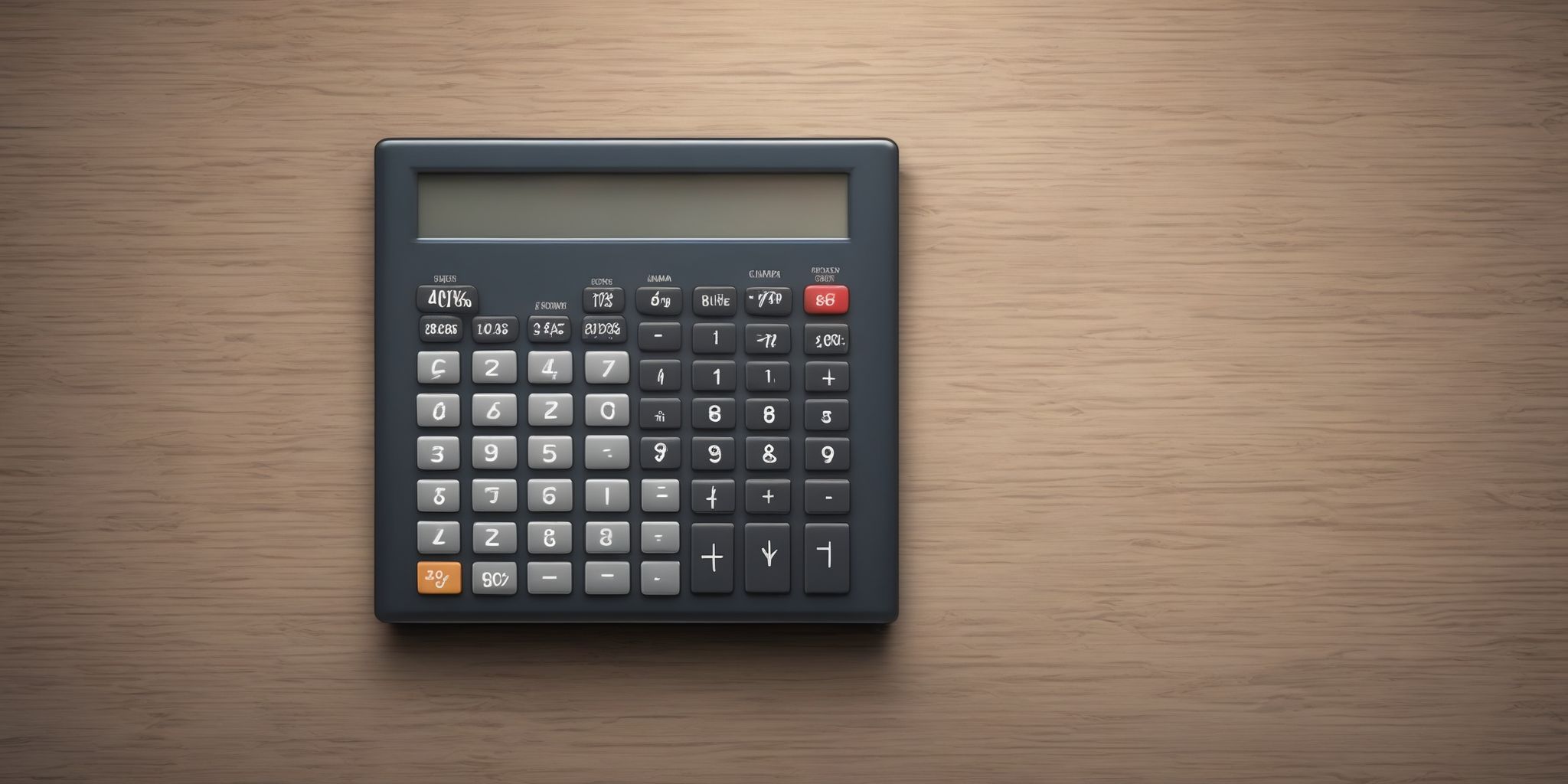Diving into the Exciting Realm of Foreign Exchange Futures: What You Need to Know
Picture this: you're sitting at a café in a bustling city, sipping your favorite brew while gazing out at the mesmerizing financial district skyline. As you watch the numbers and graphs flicker on the screens of traders, an air of mystery and excitement fills the room. What are these traders so intently focused on? Welcome to the thrilling realm of foreign exchange futures, a dynamic world where currencies collide and fortunes are made.
In this article, we'll take a plunge into this captivating domain, revealing what you need to know to navigate the intricacies of foreign exchange futures. Get ready to dive into a world where risks and rewards dance at the fingertips of those equipped with knowledge and strategy.
Understanding Foreign Exchange Futures
Foreign exchange futures are derivative contracts that allow traders to speculate on the future value of currency pairs. These contracts are standardized and traded on regulated exchanges. By entering into a foreign exchange futures contract, traders agree to buy or sell a specific amount of one currency in exchange for another at a predetermined price on a future date.
These futures contracts provide traders with a way to hedge against currency risk, as well as to speculate on currency movements for profit. They offer advantages such as high liquidity, leverage, and the ability to trade 24 hours a day. However, it's important for traders to familiarize themselves with contract sizes, tick values, and expiration dates to make informed trading decisions.
Benefits of Trading Foreign Exchange Futures
Trading foreign exchange futures offers several benefits to investors.
Firstly, it allows for enhanced liquidity and access to global markets, enabling traders to take advantage of price fluctuations in major currency pairs. This can lead to increased trading opportunities and potential profits.
Secondly, foreign exchange futures provide a transparent and regulated marketplace, reducing counterparty risks and ensuring fair pricing.
Additionally, futures contracts offer the flexibility to use leverage, enabling traders to control larger positions with smaller capital requirements. Lastly, trading foreign exchange futures can act as a hedging tool, allowing businesses to mitigate currency risks and protect against adverse market movements.
How Foreign Exchange Futures Work
Basic Mechanics of Foreign Exchange Futures
Foreign exchange futures are standardized contracts that enable traders to speculate on the future value of currency pairs. These contracts have specific features, including a predetermined size, expiry date, and tick value. Traders can take long or short positions, depending on their expectations for the currency's price movement. Margin requirements allow traders to gain exposure to larger positions by putting up a fraction of the total contract value. When the expiry date approaches, traders have the option to roll over their positions to a new contract or settle in cash. Understanding these mechanics helps traders engage in speculative trading and manage their risk effectively. For instance, when trading USD/EUR futures, a trader can enter a long position in anticipation of the US dollar's value increasing relative to the euro.
Trading Currency Pairs
Foreign Exchange Futures involve trading currency pairs, which is the foundation of forex trading. A currency pair consists of two different currencies, where one is bought and the other is sold simultaneously.
For example, EUR/USD represents the Euro against the US Dollar. When trading currency pairs, traders aim to profit from the fluctuations in exchange rates between the two currencies. For instance, if a trader believes the Euro will strengthen against the US Dollar, they would buy the EUR/USD currency pair. Conversely, if they expect the Euro to weaken, they would sell the pair. Understanding the dynamics of currency pairs is crucial in determining when to enter or exit trades and maximizing potential profits.
Margin and Leverage
Foreign exchange futures trading involves the use of margin and leverage, which allows traders to control large positions with a relatively small amount of capital. Margin is the collateral required to open a position, while leverage magnifies the potential returns and losses. Traders should exercise caution when using leverage, as it amplifies risk.
For example, with 50:1 leverage, a 2% change in exchange rates can result in a 100% loss of the invested capital. It is essential to understand the potential risks and carefully manage leverage to avoid significant losses. Proper risk management strategies, such as setting stop-loss orders and position sizing, are crucial when trading foreign exchange futures.
Expiration Dates and Rollovers
Foreign Exchange Futures: Expiration Dates and Rollovers
- Expiration Dates: Foreign Exchange Futures contracts have specific expiration dates, after which they cease to exist.
- Rollovers: Traders who wish to maintain their positions beyond the expiration date can choose to rollover their contracts.
- Rollover Process: Traders close their expiring position and simultaneously open a new position with a later expiration date.
- Considerations: Rollover costs, such as interest differentials between the currencies being traded, should be factored in.
- Practical Example: When trading a EUR/USD futures contract, a trader can choose to rollover their position from the current month to the next month.
- Takeaway: Understanding expiration dates and rollovers is crucial for managing positions and avoiding unintended contract expirations. Traders should consider market conditions and costs associated with rolling over contracts.
Understanding Contract Sizes and Tick Values
Foreign exchange futures contracts have standardized contract sizes, which determine the quantity of the underlying currency that is being traded. Contract sizes vary depending on the currency pairs involved, with popular pairs like EUR/USD typically having larger sizes. Tick values, on the other hand, represent the minimum price movement of a contract and help determine the profit or loss per tick.
For example, if the tick value is $10 and the price moves one tick in your favor, that represents a $10 profit. Being aware of contract sizes and tick values is important for effectively managing risk and determining position sizes when trading foreign exchange futures.
Factors Influencing Foreign Exchange Futures
Economic Factors
Economic factors heavily influence the performance of Foreign Exchange Futures. Factors such as interest rates, inflation, and GDP growth significantly impact the value of currencies.
For example, a country with strong economic growth and low inflation is likely to have a stronger currency. Traders should closely monitor economic indicators and news releases that provide insights into these factors. By understanding how economic data affect currency values, traders can make more informed decisions when entering or exiting positions. Awareness of economic factors helps traders anticipate trends and potential opportunities for profit in the Foreign Exchange Futures market.
Political Factors
Political factors play a significant role in the realm of Foreign Exchange Futures. Changes in government policies, geopolitical tensions, and elections can all impact currency values.
For example, when a country experiences political instability, its currency may weaken as investors become cautious. Similarly, trade disputes between nations can result in currency fluctuations. Traders need to stay informed about political events to anticipate potential impacts on currency markets. By understanding the relationship between political developments and currency movements, traders can adjust their strategies accordingly and capitalize on profit opportunities presented by political factors.
Market Sentiment
Market Sentiment in Foreign Exchange Futures:
- Market sentiment refers to the overall feeling or mood of traders and investors towards a particular currency or market.
- It is influenced by various factors such as economic indicators, geopolitical events, and news releases.
- Traders often analyze market sentiment to determine the direction of a currency's price movement.
- Positive market sentiment towards a currency can lead to increased demand and higher prices, while negative sentiment can result in decreased demand and lower prices.
- It is important for traders to stay updated with news and market trends to gauge market sentiment accurately.
- By understanding and adapting to market sentiment, traders can make more informed trading decisions and better manage their risk in foreign exchange futures.
Risks and Challenges of Foreign Exchange Futures
Leverage and Volatility
Foreign exchange futures trading involves leveraging positions to amplify potential returns. However, this increased leverage also exposes traders to higher levels of volatility. Volatility refers to the price fluctuations in the market, which can result in rapid gains or losses. Traders must carefully assess market conditions and consider their risk tolerance when using leverage.
For example, a trader who uses high leverage on a volatile currency pair may experience significant profits or losses in a short period. It's important to set realistic expectations, use risk management tools, and stay updated on market news to effectively navigate the challenges of leverage and volatility in foreign exchange futures trading.
Market Manipulation
Market Manipulation: An Ongoing Concern
Market manipulation poses a constant threat in the world of foreign exchange futures. Manipulators can artificially influence currency prices to profit at the expense of other traders. Techniques such as spread manipulation, spoofing, or pump and dump schemes can distort the market. Traders must remain vigilant and learn to identify suspicious patterns or abnormal price movements. By staying informed about market news and economic events, traders can enhance their ability to recognize potential manipulative activities. Implementing effective risk management strategies, such as setting stop-loss orders, can help mitigate the impact of market manipulation and protect against significant losses.
How to Get Started with Foreign Exchange Futures
Choosing a Reputable Brokerage
When it comes to choosing a reputable brokerage for trading foreign exchange futures, thorough research is imperative. Look for brokers with a solid reputation, good regulation, and a track record of excellent customer service.
Additionally, consider factors like trading fees, available trading platforms, and the range of currency pairs offered. It's also advisable to read reviews and seek recommendations from experienced traders. Remember, finding a reliable brokerage can greatly impact your trading experience, so take the time to make an informed decision.
Opening a Trading Account
Opening a trading account is a vital step in getting started with foreign exchange futures. Look for a reputable brokerage that offers easy account setup and competitive fees. Provide necessary personal and financial information during the registration process. Once your account is approved, you can fund it using various methods, such as bank transfers or credit cards.
Familiarize yourself with the trading platform provided by the brokerage and ensure it offers the necessary tools for monitoring and executing trades. It's important to carefully review the terms and conditions and understand any associated fees before finalizing the account opening.
Developing a Trading Strategy
Developing a robust trading strategy is crucial in navigating the world of Foreign Exchange Futures. Start by determining your risk tolerance and financial goals. Conduct thorough market analysis, including technical and fundamental factors. Consider using indicators and chart patterns to identify entry and exit points. Implement risk management techniques such as setting stop-loss orders and taking profits. Regularly review and adjust your strategy to adapt to changing market conditions.
Test your strategy using demo accounts or backtesting before executing real trades. Remember to stay disciplined and avoid emotional decision-making to increase your chances of success in Foreign Exchange Futures.
Conclusion
The world of foreign exchange futures is an exciting and dynamic realm that offers various opportunities for investors. Understanding the basics is crucial in navigating this market efficiently.
In this article, we will explore key concepts such as leverage, contract sizes, margin requirements, and trading hours.
Additionally, we will delve into the benefits and risks associated with foreign exchange futures. Whether you are a seasoned trader or a novice investor, this concise guide will provide you with valuable insights to help navigate this exciting market with confidence.


